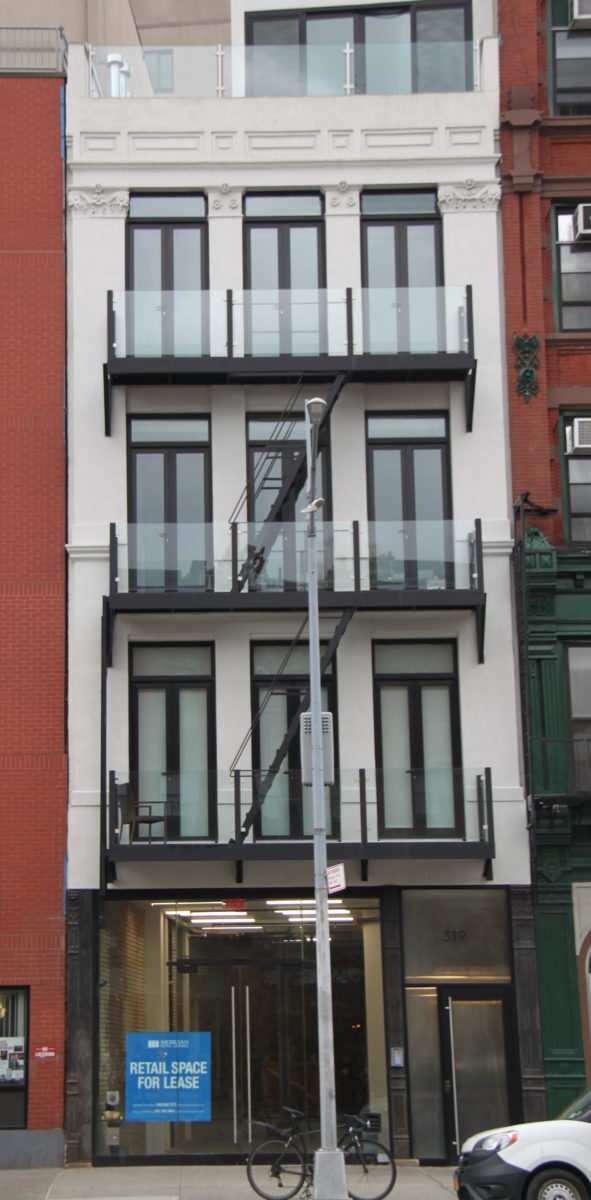The company’s first several performances were in the auditorium of Our Lady of Pompeii on Carmine Street. The first opera performed was The Barber of Seville, “sung in Italian,” according to a New York Times article from the time, “for an audience which clearly understood the language.” In 1951, the company moved to its first permanent home at 159 Bleecker Street, where it became part of the larger avant-garde theatre scene that swept the Village in the post-war years. 159 Bleecker Street had been a former movie house which would later become the Circle in Square Theatre. It had been constructed by, and used primarily for, the neighborhood’s thriving Italian community, though it was sadly lost to demolition in 2004. The Amato Closed in 2009.
Though the Holy Mission Society altered the ground floor and storefront in 1935, the building retains much historic integrity in its classically-decorated pilasters, carved frieze, molded panels, and original window configurations. Prior to the Amato, a newspaper article from 1905 indicates that J. Whitelaw & Co., cigar manufacturers, had been housed in the building. In 1906, the building had been taken over by the Holy Mission Society, which operated out of the building for the first half of the century.
Block : 457 / Lot : 8 / Building Date : 1899 / Original Owner : Karl R. Werner / Original Use : Store/Lofts / Original Architect : Julius Boekell & Son


Do you know this building? Please share your own stories or photos of this building here!